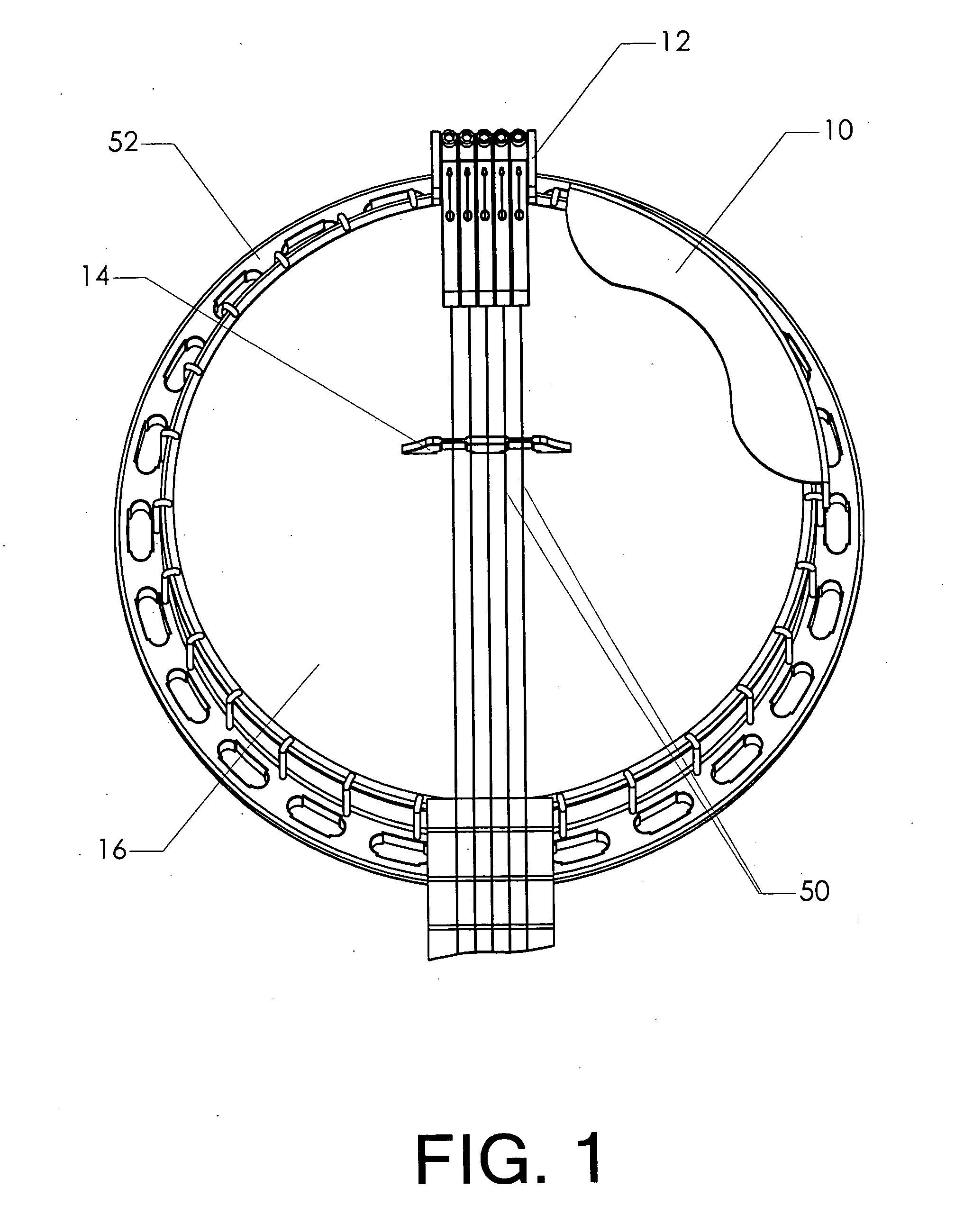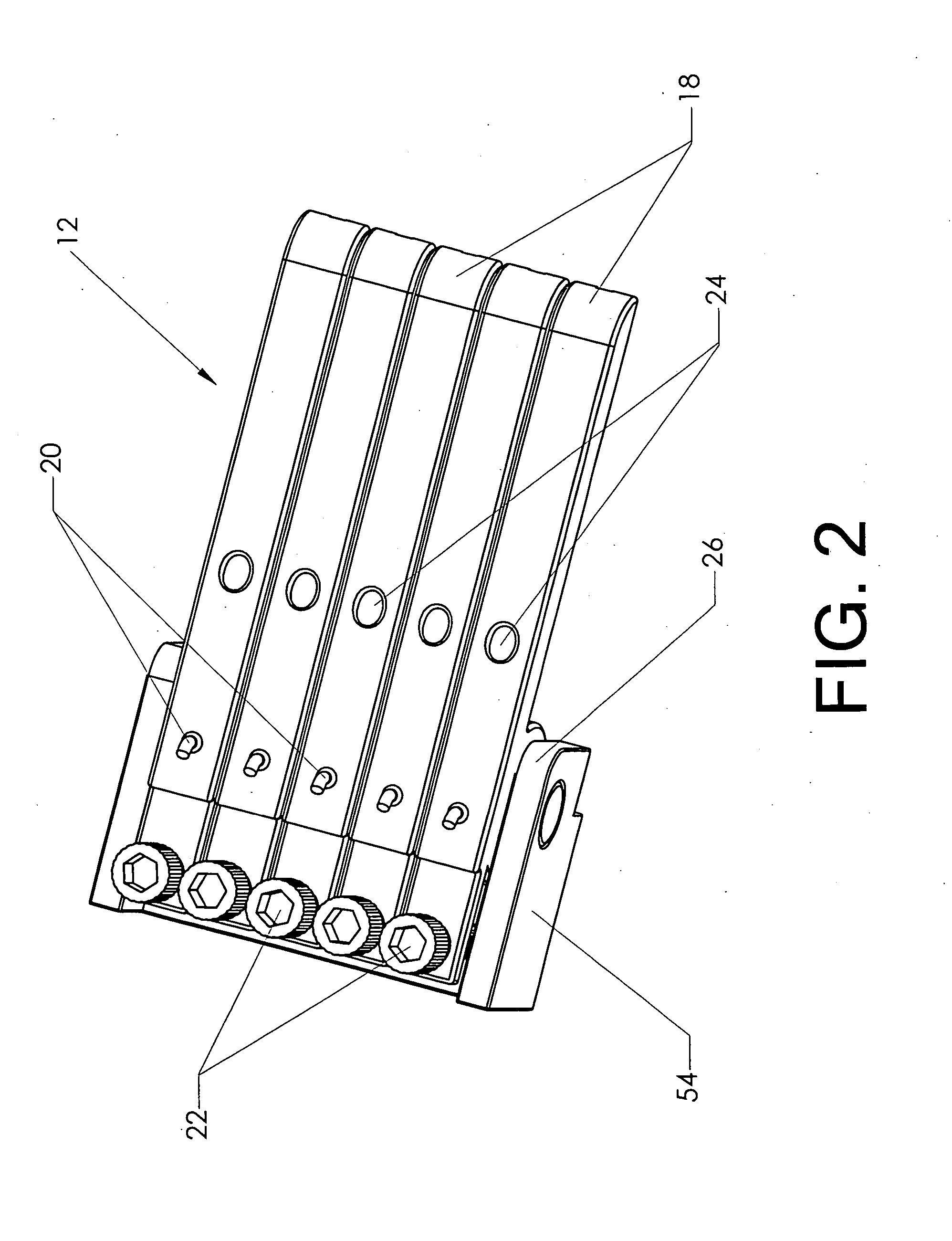Individual string adjusting tailpiece
a tailpiece and individual technology, applied in the field of tailpieces, can solve the problems of cumbersome tasks, difficult to achieve with conventional tailpieces, and tailpieces have only enjoyed limited commercial success
- Summary
- Abstract
- Description
- Claims
- Application Information
AI Technical Summary
Benefits of technology
Problems solved by technology
Method used
Image
Examples
Embodiment Construction
[0018] The present invention, tailpiece 12 is shown installed on banjo head 10 in FIG. 1. Skin 16 is attached to the top of banjo head 10 by rim 52. Strings 50 attach to tailpiece 12 and wrap over bridge 14 before extending up the fret board and attaching to the tuning screws (not shown). Tailpiece 12 rests on top of rim 52 so that the lever arms of tailpiece 12 extend over skin 16. Tailpiece 12 attaches to banjo head like conventional banjo tailpieces. Various attachment hardware is well known in the prior art.
[0019] A detailed view of tailpiece 12 is provided in FIG. 2. Tailpiece 12 includes a plurality of lever arms 18 which are pivotally attached to mounting bracket 54. Although tailpiece 12 is shown with five lever arms 18, tailpiece 12 may also be provided with four lever arms for four string banjo applications. Mounting bracket 54 has a pair of support members 26 which provide lateral support to lever arms 18. Support members 26 prevent lever arms 18 from vibrating laterally...
PUM
 Login to View More
Login to View More Abstract
Description
Claims
Application Information
 Login to View More
Login to View More - R&D
- Intellectual Property
- Life Sciences
- Materials
- Tech Scout
- Unparalleled Data Quality
- Higher Quality Content
- 60% Fewer Hallucinations
Browse by: Latest US Patents, China's latest patents, Technical Efficacy Thesaurus, Application Domain, Technology Topic, Popular Technical Reports.
© 2025 PatSnap. All rights reserved.Legal|Privacy policy|Modern Slavery Act Transparency Statement|Sitemap|About US| Contact US: help@patsnap.com



